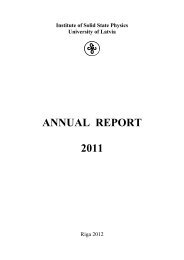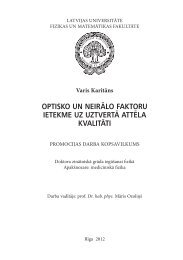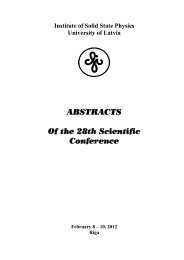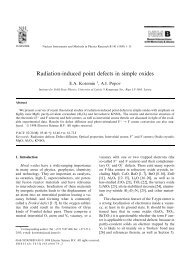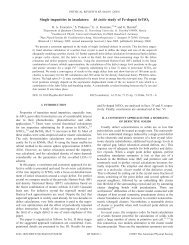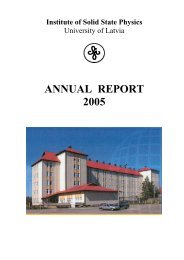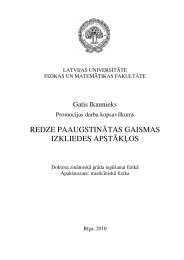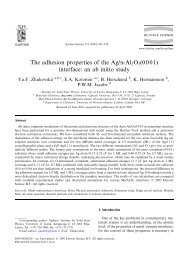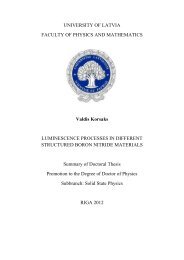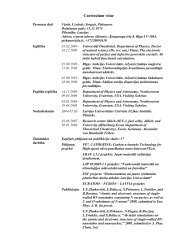Annual Report 2012 - Latvijas Universitātes Cietvielu fizikas institūts
Annual Report 2012 - Latvijas Universitātes Cietvielu fizikas institūts
Annual Report 2012 - Latvijas Universitātes Cietvielu fizikas institūts
You also want an ePaper? Increase the reach of your titles
YUMPU automatically turns print PDFs into web optimized ePapers that Google loves.
experimental data. We focused on the defect energetics. It is confirmed that an oxygen<br />
vacancy has the lowest formation energy among all single vacancies probed. It is also<br />
established that oxygen Frenkel defects, full Schottky disorder and partial Schottky<br />
disorder accompanied by the growth of a new phase (e.g. a binary oxide) all have<br />
relatively low formation energies and are favorable. The obtained cation exchange<br />
energies are very low on both the A- and B- sublattices of the perovskite structure,<br />
which carries implications as to the stability of the materials and ultimately to the<br />
efficiency of energy conversion<br />
Fig. 1 Co-O-Co oxygen hollow (left) and split (right) interstitial configurations, their<br />
atomic charges, and inter-atomic distances.<br />
3.5<br />
3.0<br />
2.5<br />
2.0<br />
E, eV<br />
1.5<br />
1.0<br />
0.5<br />
, , ,<br />
, cubic phase<br />
hexagonal phase (2H)<br />
0.0<br />
single O vacancy formation energy, eV<br />
3.5<br />
3.0<br />
2.5<br />
2.0<br />
1.5<br />
1.0<br />
0.5<br />
0.0 0.2 0.4 0.6 0.8 1.0<br />
<br />
Fig.2 The cubic (left top) and the hexagonal (2H) (left bottom) BSCF structures are<br />
presented. Right- the total energy and the single vacancy formation energy of the cubic<br />
55



